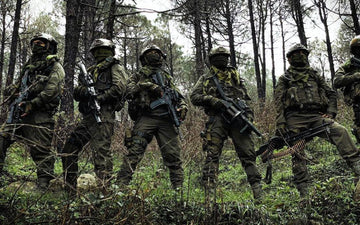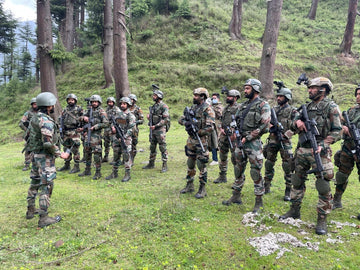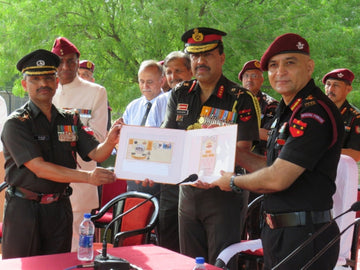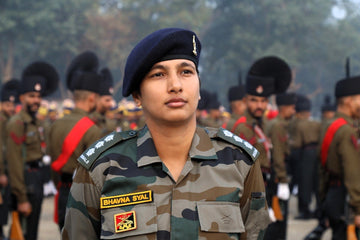The position of the Chief of the Army Staff (COAS) in the Indian Army is not just a title; it carries with it immense responsibilities and prestige that plays a pivotal role in the national security apparatus of India. The COAS supervises all aspects of the Indian Army, forms policies regarding land warfare, and provides essential strategic guidance to the government. Given the critical nature of this role, the compensation package is reflective of the authority and the accountability that comes with the position.
Historical Context
The Indian Army, established in 1895, has seen a transformation in its structure and purpose over the years. Historically, the leadership hierarchy was influenced by colonial legacies and later adapted to serve a sovereign nation. The Chief of Army Staff was designated to lead and shape the Army, becoming a crucial part of the government's military policymaking framework. Initially, the pay scales for high-ranking officials were modest compared to their responsibilities. However, as the military evolved, particularly after significant historical events like the 1962 Sino-Indian War and the 1999 Kargil Conflict, the emphasis on bolstering military leadership emerged. The pay structure underwent review and transformation, especially with the implementation of the 7th Pay Commission, which aimed to update salaries in accordance with the inflated cost of living and the expanded roles of military personnel.
Understanding the Salary of the Chief of the Army Staff
Basic Salary
As of the latest updates, the Chief of the Army Staff draws a fixed monthly basic salary of ₹2,50,000 (approximately US$3,000). This salary reflects the significance and immense responsibilities associated with the highest military position within the Indian Army. The COAS not only leads the Army but also serves as an adviser to the Government of India on all military-related matters. It is crucial to underscore that the basic salary represents just one aspect of the COAS’s compensation, as various allowances and perks augment their financial remuneration.
Additional Allowances and Perks
While the basic salary provides a framework for income, it is the additional allowances and perks that enhance the overall financial package significantly. These benefits typically include:
- House Rent Allowance (HRA): Given that the COAS resides in government-provided accommodations, this may not be applicable, but certain benefits related to housing can be included in the overall package.
- Transport Allowance: The COAS is entitled to transportation allowances for official duties.
- Dress and Maintenance Allowances: As a high-ranking officer, the COAS must maintain military decorum and uniforms, often necessitating allowances for purchasing and maintaining uniforms.
- Child Education Allowance: Financial support for the education of their children.
- Medical Facilities: Comprehensive medical benefits for the COAS and their family, ensuring their healthcare needs are met without the burden of excessive costs.
These allowances, while not publicly specified in exact figures, significantly uplift the take-home pay of the COAS, reflecting the stature and the moral obligation of taking care of one of the highest-ranking officers of the Army.
Rank and Responsibility
The Chief of the Army Staff stands as the apex of the military hierarchy, with responsibilities that extend beyond mere leadership. The COAS acts as a principal war strategist, playing a vital role in ensuring national security and planning operations. The pay scale of COAS is categorized within Level 18 according to the 7th Pay Commission, which sets the salary structure for all central governmental employees.
The responsibilities that come with this high rank are vast, requiring a combination of leadership skills, strategic planning, and operational management. The COAS must frequently engage with foreign military counterparts, handle sensitive defense-related negotiations, and oversee the training and preparedness of the Army, all of which necessitate extensive expertise and, subsequently, appropriate remuneration.
Comparative Analysis
When considering the salary of the COAS, it’s essential to analyze it in light of other high-profile government positions. For example, the salary of the Prime Minister of India is ₹2,00,000 per month, while that of the Chief Justice of India and other service chiefs also varies. The existence of a structured pay scale helps delineate the importance of military leadership as a critical component of governance.
In comparison to what is observed in private sectors or corporations, the salary of the COAS remains modest. However, the unique allowances and perks associated with the role balance the compensation as it represents not just financial remuneration but also a commitment to national service, integrity, and sacrifice.
Addressing Inaccuracies
An important point to note is that some sources, including platforms like Glassdoor, have reported salaries significantly lower than the observed ₹2,50,000. Some of these estimates ranged from ₹43,336 to ₹46,482 per month, which could stem from misconstrued data regarding rank-and-file soldiers or lower-ranking officers. It’s crucial to recognize that salary structures within the military are defined with respect to ranks and responsibilities rather than generalizations across the board.
Challenges and Solutions
One of the primary challenges facing military personnel, including the COAS, is the public perception regarding their salaries. Given the nation's large population and varied socio-economic backgrounds, the apparent discrepancy between the salaries of military leaders and average citizens can lead to public debate.
Potential Solutions
- Increased Transparency: The military can develop better channels of communication and transparency regarding pay scales and remuneration packages, highlighting the complexities of their responsibilities.
- Public Engagement: Engaging in initiatives that showcase the Army's contributions to national integrity, disaster management, and community service can help balance perceptions regarding military expenditure.
- Political Support: Ensuring ongoing political advocacy to highlight the importance of sustained investment in national defence and military leadership pay structures that attract and retain talented officers.
Future Trends and Predictions
As the Indian military continues to modernize and adapt to contemporary threats, including cyber warfare and hybrid conflicts, there is expected to be evolution in salary structures, likely influenced by the rising cost of living and military needs. Moreover, the military is seeing a growing focus on technology integration, indicating that future leaders will need enhanced training and competencies, which could further influence pay scales.
The ongoing discourse for particularly engaged military leaders, therefore, may lead not only to salary raises but also to additional incentives tied to specific operational performances or missions.
Case Studies and Real-World Applications
Examining the role of the COAS can be encapsulated through leadership examples in times of crisis. For instance, General Bipin Rawat, who served as COAS until his untimely demise in late 2021, was renowned for his decisive actions during the Galwan Valley conflict with China in 2020. His commitment to national defense and proactive strategies garnered both respect within military ranks and recognition from the Indian populace.
Real-world applications of leadership skills and strategic insights exemplified how military remuneration could motivate officers to excel, demonstrating that salary is just one of many components of the role that contribute to effective military leadership.
Conclusion
In conclusion, the salary of the Chief of the Army Staff (COAS) in India, set at ₹2,50,000, is emblematic of a position infused with responsibility, strategic importance, and national pride. With additional allowances and perks enhancing this basic salary, the compensation package is in line with the stature of one of the military's highest-ranking officers. The discussions surrounding military salaries transcend mere numbers, inviting broader considerations regarding public perception, the balancing of military expenditures, and motivation for retaining and nurturing military talent.
As India continues to navigate through dynamic geopolitical landscapes and security concerns, the importance of having a well-compensated and strategically minded COAS cannot be overemphasized. Ensuring that the military leadership is both respected and adequately compensated is not simply a matter of fiscal policy; it is integral to a secure and resilient national future.
For those aspiring to become officers in the Indian Army, resources such as SSBCrack and SSBCrackExams provide valuable guidance through study materials and courses aimed at equipping candidates for a successful career in defence services. Engaging with these resources can lead to a pathway not only towards understanding such prestigious roles but also towards actively participating in the nation's defence narrative.





